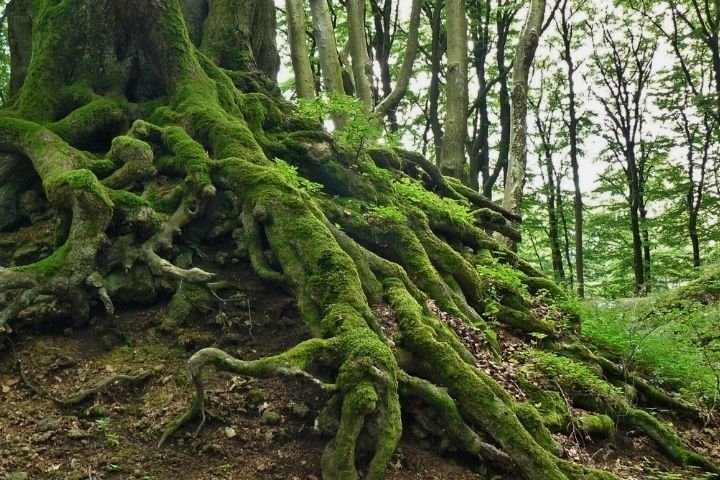Airspade technology has revolutionised various fields, including arboriculture, landscaping, and construction. Its ability to safely excavate soil without damaging roots or underground utilities has made it indispensable for many projects. This article explores several case studies where Airspade technology played a crucial role, highlighting the tool’s versatility and effectiveness.
1. Central Park, New York: Preserving Urban Trees
Background
Central Park, a historic and iconic green space in New York City, faced challenges with soil compaction and root damage due to heavy foot traffic and urban development. Maintaining the health of its trees was paramount, necessitating a solution that could address soil issues without harming the roots.
Project Overview
Air Spade technology was employed to aerate the soil and expose tree roots for inspection and treatment. The project aimed to improve soil structure, enhance root health, and ensure the longevity of the park’s trees.
Outcomes
The use of Airspade technology allowed for precise soil excavation, reducing compaction and improving aeration. Arborists could inspect and treat roots without causing damage, leading to healthier trees and a more resilient urban forest. The project demonstrated how Airspade technology could effectively balance urban development and tree preservation.
2. London’s Historic Tree Preservation
Background
London, a city with numerous historic trees, faced the challenge of installing new utility lines without damaging these valuable assets. Traditional excavation methods posed significant risks to the roots of centuries-old trees.
Project Overview
Utility companies in London adopted Airspade technology to excavate soil around tree roots safely. The technology was used to expose roots and carefully install utility lines without causing harm.
Outcomes
Airspade technology enabled precise excavation, preserving the integrity of historic trees while allowing necessary utility installations. The successful completion of these projects demonstrated that modern infrastructure development could coexist with the preservation of natural heritage.
3. University of Cambridge: Archaeological Excavation
Background
The University of Cambridge undertook an archaeological excavation on its grounds, aiming to uncover historical artefacts and structures. The project required a method that could excavate soil without damaging fragile relics.
Project Overview
Airspade technology was utilised to carefully remove soil layers and expose archaeological features. The non-invasive nature of the tool ensured that artefacts were preserved intact.
Outcomes
The use of Airspade technology resulted in the successful recovery of numerous artefacts, providing valuable insights into the university’s history. The project highlighted Airspade’s potential in archaeological applications, where precision and care are paramount.
4. Chicago Botanic Garden: Soil Decompaction
Background
The Chicago Botanic Garden, a renowned institution dedicated to plant conservation and education, faced issues with soil compaction in its display gardens. Compacted soil hindered plant growth and reduced the aesthetic appeal of the gardens.
Project Overview
Garden staff employed Airspade technology to decompact soil and improve its structure. The goal was to enhance root growth and overall plant health, ensuring vibrant and healthy displays.
Outcomes
Airspade technology effectively decompacted the soil, leading to improved aeration and water infiltration. Plants exhibited better growth and health, enhancing the garden’s beauty and educational value. This case demonstrated Airspade’s utility in horticultural settings.
5. San Francisco’s Utility Upgrades
Background
San Francisco, a city with a dense network of underground utilities, needed to upgrade its infrastructure without disrupting services or damaging existing utilities. Traditional digging methods posed significant risks of accidental damage.
Project Overview
The city employed Airspade technology for utility upgrades, allowing precise and safe excavation around existing utilities. The technology was used to expose and replace ageing infrastructure without causing interruptions.
Outcomes
Airspade technology enabled efficient and non-destructive excavation, reducing the risk of utility damage and service disruptions. The successful completion of the upgrades underscored Airspade’s effectiveness in urban utility projects.
6. Sydney’s Urban Tree Management
Background
Sydney, Australia, faced the challenge of managing its urban trees amidst ongoing construction and development. Protecting tree roots during excavation was crucial for maintaining the city’s green infrastructure.
Project Overview
City arborists utilised Airspade technology to excavate soil around tree roots during construction projects. The technology allowed for safe root exposure and protection while enabling necessary development activities.
Outcomes
Airspade technology facilitated the coexistence of urban development and tree preservation, ensuring the health and stability of Sydney’s urban trees. The project highlighted the tool’s role in sustainable urban forestry practices.
7. Los Angeles Arboretum: Root Collar Excavation
Background
The Los Angeles County Arboretum and Botanic Garden needed to perform root collar excavations to address issues of root girdling and decay in its tree collection. The project required a non-invasive method to expose root collars safely.
Project Overview
Arborists at the arboretum employed Airspade technology to remove soil and expose root collars without damaging the trees. The goal was to diagnose and treat root issues effectively.
Outcomes
The use of Airspade technology allowed for accurate diagnosis and treatment of root problems, enhancing the health and longevity of the arboretum’s tree collection. This case illustrated Airspade’s application in specialised arboricultural practices.
Conclusion
The case studies presented here highlight the diverse applications and successes of Airspade technology across various fields. From urban tree preservation and utility installation to archaeological excavation and horticultural improvement, Airspade has proven to be an invaluable tool. Its ability to perform precise, non-destructive excavation offers significant advantages, ensuring that development and conservation can go hand in hand.
As urbanisation and infrastructure development continue to expand, the need for innovative, environmentally friendly solutions becomes increasingly important. Airspade technology provides a practical and effective approach to addressing these challenges, promoting sustainability and the preservation of natural and historical resources. By learning from these successful projects, arborists, landscapers, and construction professionals can harness the power of Airspade technology to achieve their goals while protecting the environment.



